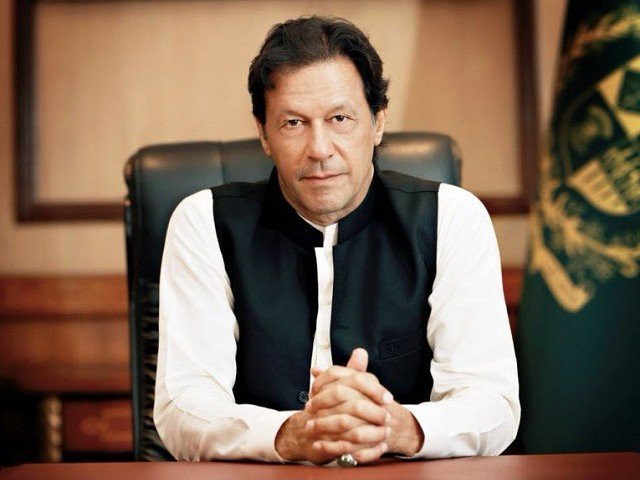Economic framework to be unveiled on January 23
Stabilisation programme will aim to put economy on recovery path

Prime Minister Imran Khan. PHOTO: PID
“The macroeconomic framework will now be unveiled on January 23,” said Asad Umar while talking to The Express Tribune on Friday.
PM Imran gave his approval during a briefing on the macroeconomic framework by the Ministry of Finance, which was also attended by some members of the Economic Advisory Council.
The PM endorsed the plan a day after the State Bank of Pakistan data revealed that the external sector challenges “still persist”.
The high-level huddle also discussed whether Pakistan should go to the International Monetary Fund right away or wait for an opportune time due to extremely tough conditions proposed by the fund for the bailout package.
New five-year plan faces hard choices
In October, Pakistan had decided to knock on the IMF door, but staff level programme negotiations ended inconclusively due to disagreement on the conditions.
On last Tuesday, the premier had given 10 days to the Finance Ministry to present the macroeconomic framework.
“A meeting will also be held today [Saturday] to discuss the future roadmap of the IMF programme,” said Umar. “The future benchmarks of the IMF programme will now be discussed.”
Umar said that the communication strategy of the macroeconomic framework would also be decided.
The finance minister dispelled the impression that there was disagreement on the proposed macroeconomic framework.
He announced unveiling the five-year macroeconomic framework along with the Finance Bill on January 23.
The Federal Board of Revenue also got approval for the broader contours of taxation measures from the prime minister primarily aimed at ease of doing business.
The government plans to lower tariff rates on raw materials and intermediary goods to cut the production cost.
However, some participants had difference of opinion on the underlying macroeconomic assumptions.
Sources said the Ministry of Finance once again made highly “optimistic macroeconomic assumptions”.
IMF assistance: Talks with Pakistan focus on policy priorities, reforms
The framework was built on the assumptions of steep fiscal and monetary adjustments, which according to some participants were unrealistic, they said, adding that there was also difference of opinion whether the foreign inflows that the Ministry of Finance was projecting could be materialised or not.
Both these assumptions carry implications for the end period objective of putting the economy on sustainable path of economic growth.
There were apprehensions that most of the assumptions were not based on realism, according to the sources.
One external shock, for instance in shape of fluctuation in the crude oil prices, could undermine the whole stabilisation programme, the sources said, adding that there were also questions over the strategy that the government wanted to adopt to achieve targets set in the macroeconomic model.
However, the stakeholders bear broad consensus on the structural adjustments required for stabilising the economy. These were the size, pace of adjustments and the assumptions, which were contested by the experts.
“One fundamental flaw in the proposed macroeconomic framework is that the current expenditures showed growth while the development expenditures remained constant in terms of the size of the economy,” said former finance minister Dr Hafiz A Pasha, who saw the proposed plan last week and disagreed with the framework.
“The government’s target should be to economise the current expenditures to save resources for development spending as the country needs to spend on construction of dams,” he added.
Since last week, the government has made slight adjustments in the proposed macroeconomic framework.
The Ministry of Finance is projecting that the current expenditures would keep growing from 18.3 per cent of the gross domestic product (GDP) in this fiscal year to over 19 per cent of the GDP.
Compared to this, the development expenditures were constant at 3.5 per cent of the GDP, the sources said.
They said that defence spending has also not been fully reflected and is shown growing constant at 2.8 per cent of the GDP over the next four years.
The external sector challenges largely remain unaddressed and despite official claims of achieving quick stabilisation, the first half results are worrisome.
The current account deficit during the first half of the fiscal year stood at $8 billion –only 4.4 per cent less than the comparative period of the last fiscal year.
This means, the finance ministry’s projection to restrict the current account deficit to $13.2 billion by June has become unrealistic.
Even the 4.4 per cent reduction in the current account deficit was due to healthy growth in remittances.
Despite taking import compression measures and devaluing currency by 32 per cent during last one year, the SBP data showed that the trade deficit in the first half actually widened by 5.4 per cent to $15.6 billion.
The imports grew 3.0 per cent in the first half while growth in exports was almost flat, according to the SBP.
These results showed that the government was far away from bringing some stability in the external sector.



















COMMENTS
Comments are moderated and generally will be posted if they are on-topic and not abusive.
For more information, please see our Comments FAQ